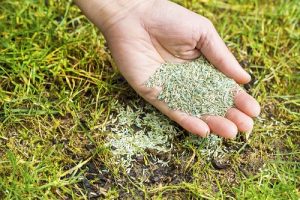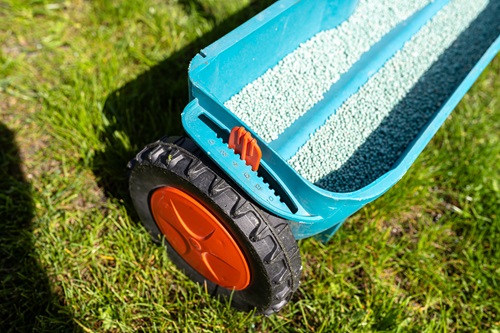A lush green lawn is the best way to show off your garden and home. It is a living structure that enhances the beauty of shrub borders, flowerbeds, and trees. Lawns make the perfect carpet for outdoor entertaining and recreation. They remove carbon dioxide from the air and emit oxygen. This helps to keep the summer temperatures down. That’s why lawn care Conway SC is important.
However, lawn care is expensive. U.S. homeowners use more than 3,000,000 tons of synthetic fertilizers each year and 70 million pounds of lawn pesticides, herbicides, and herbicides every year. These chemicals can pose serious dangers to children, pets, and wildlife of all types. These chemicals can also be found in our rivers, lakes, and underground aquifers, which makes matters worse. It’s becoming more difficult and costly to care for a lawn that is chemically and water-dependent, as droughts and water shortages are becoming more common.
It’s easier than you think to convert your lawn to a natural, low yard maintenance.
Lawn Care Conway SC Essential Steps That Will Ensure Your Success.
Select the right kind of grass
Many lawns have a problem: the grass variety isn’t well-suited for the area. Consider these things:
Climate: Some grass varieties are not able to withstand extreme heat or cold, and may not thrive under wet or dry conditions. Some grass varieties are well-known for their resistance to drought or hardiness.
Sun or shade: Many grass varieties need full sun to thrive. You should plant grass varieties that can withstand shade if your yard gets less than four hours of sun per day.
Foot traffic on your landscaping: Different grass varieties are more sensitive to foot traffic. Choose a coarse-textured grass variety that is tolerant to some abuse if your lawn gets a lot of foot traffic.
Considerations for specific sites: It is not a good idea to grow a lawn on steep slopes, in deep shade, on rocky terrain, or along walking paths. These areas are best suited for perennials, ground cover, spreading evergreens and wildflowers. Consider stepping stones or gravel paths for areas with high foot traffic.
You can improve your soil
Chemical-fed lawns tend to have shallow roots because they receive most of their water and nutrients from the top. Natural lawns get most of their water and nutrients from the soil they are growing in. The quality of the soil will determine the quality of your lawn.
A simple test can be used to determine the quality of your soil. You can cut a piece of sod about 4 inches deep with a shovel or trowel. Take a look at the soil above and below. Is it soft and crumbly? Is there a thick layer of grass blades, and perhaps a worm? These are signs of healthy turf.
The roots can appear weak and shallow if the soil sample is not moistened or compacted. Thatch is a dense accumulation of dead stems, stems, and partially decayed organic material at the grass’ base. This material is usually re-incorporated by earthworms and microorganisms into the soil. This organic matter can build up on the soil surface in poor soils and/or soils that are not biologically active. It creates an ideal environment to spread disease. You can remove thatch by vigorous raking, or using a power dethatching device. If your soil is fertile and biologically active, thatch is not a problem.
Loose, airy soils are preferred by grass roots and soil microorganisms. Spring is the best time to aerate your lawn if it has become too compacted due to foot traffic or heavy power mowers. It is important to allow air, water, nutrients, and soil life to flow freely through the soil. You can use a power or manual aerating device. Apply lime or fertilizer (if necessary) immediately after aerating while the soil remains exposed.
To check the soil pH, make sure you do a soil test. Most grass varieties prefer a pH between 6.5 and 7.0. A simple soil test can tell you if your soil requires lime to make it neutral or sulfur to make them more acidic. You can either contact your local Cooperative Extension Service to request a soil test kit or buy one to test yourself.
Top-dressing your lawn regularly with compost or good topsoil is one of the best ways to improve and maintain healthy soil. In the spring, apply 1/4 to 1/2 inch of topsoil and rake it into the turf.

You may not need to apply any fertilizers once your soil is healthy and your lawn is well-manicured. It may take some time to improve your soil’s quality. You will need to apply organic fertilizer annually or semi-annually.
There are two types of fertilizing schedules that American lawns can use: one for cool-climate grasses, and the other for warmer-climate grasses. It is important to know what kind of grass you are growing before you fertilize.
The reputation of grass is that it’s a heavy feeder, which means that it needs lots of fertilizer. This is true for lawns with little organic matter, worms, or other soil life. Although chemical fertilizers can be beneficial for the grass, they can also negatively impact soil life and texture. They do not increase organic matter. Chemical fertilizers can also increase turf’s vulnerability to insects and disease by over stimulating growth.
Organic fertilizers slowly release nutrients over time to provide long term nutrition, improve soil tilth and encourage soil life. These fertilizers also contain essential trace nutrients, which your lawn requires in very small quantities. The soil also benefits from grass clippings that have fallen to the ground. This adds organic matter and nutrients. You should rake up any clippings that are too wet and thick to be composted later for soil application.
Proper Mowing
Instead of waiting for your lawn to grow long, mow your lawn slowly. The grass will respond more strongly to the extra leafy material that is removed. It will also use the food reserves in its root system to replace the lost leaves. Too much grass can lead to a depletion of these resources faster than it can replenish. This can result in a weaker root system, which is more vulnerable to disease and can’t compete with weeds.
The roots of grass tend to grow as deep as the blades. Keep your grass trimmed to a minimum of 2 inches. You can improve drought resistance and shade out weed seeds by “mowing high”. This means that your lawn should be at least 2 1/2 inches tall.
Do not mow your lawn in extreme heat or when the grass has gone dormant. Keep your mower blades sharp. A dull mower blade can cause injury to your lawn. It will cause you to rip rather than slice the grass. It can also pull out tender, new growth.
Proper Watering
Many factors influence how much water a lawn needs, such as weather, grass type, and soil type. Clay soils retain moisture for longer periods of time, while sandy soils drain quickly.
You can water your lawn regularly and deeply, or not at all. Shallow watering encourages weak growth and shallow rooting. Deep rooting encourages a stronger lawn by watering to 6-8 inches. To water deeply and thoroughly, your sprinkler will need to be on for at least two to four hours.
To check how much moisture has spread, place a spade in the lawn after you have watered. Do not water if the soil is not receiving enough moisture. The grass will stop growing, and it will grow back when the weather cools down and/or the rains cease. It is important to decide before the start of summer whether or not you will water your lawn. The lawn will be stressed if you make a decision between watering or not watering.
Controlling Weeds
A healthy soil and good lawn care will help to control weeds. In fact, weeds can be a sign of stressed turf or infertile soil. You can manually pull out obvious weeds. You should then reseed the area. It is best to start again if your lawn has more than 50% weeds. You should only water a small area of your lawn at once, and this is best done in the spring to prevent weeds from growing. You can immediately reseed the area. Water lightly each day until the grass seeds germinate and the roots are established. Make sure you use the correct grass seed for your growing conditions. If necessary, add organic matter to the soil pH.
Call Conner’s Lawn Care Service if you need the help of lawn care experts.
Conner’s Lawn Care Service
Myrtle Beach, SC
843-504-4901
http://connerslawncare.com/


